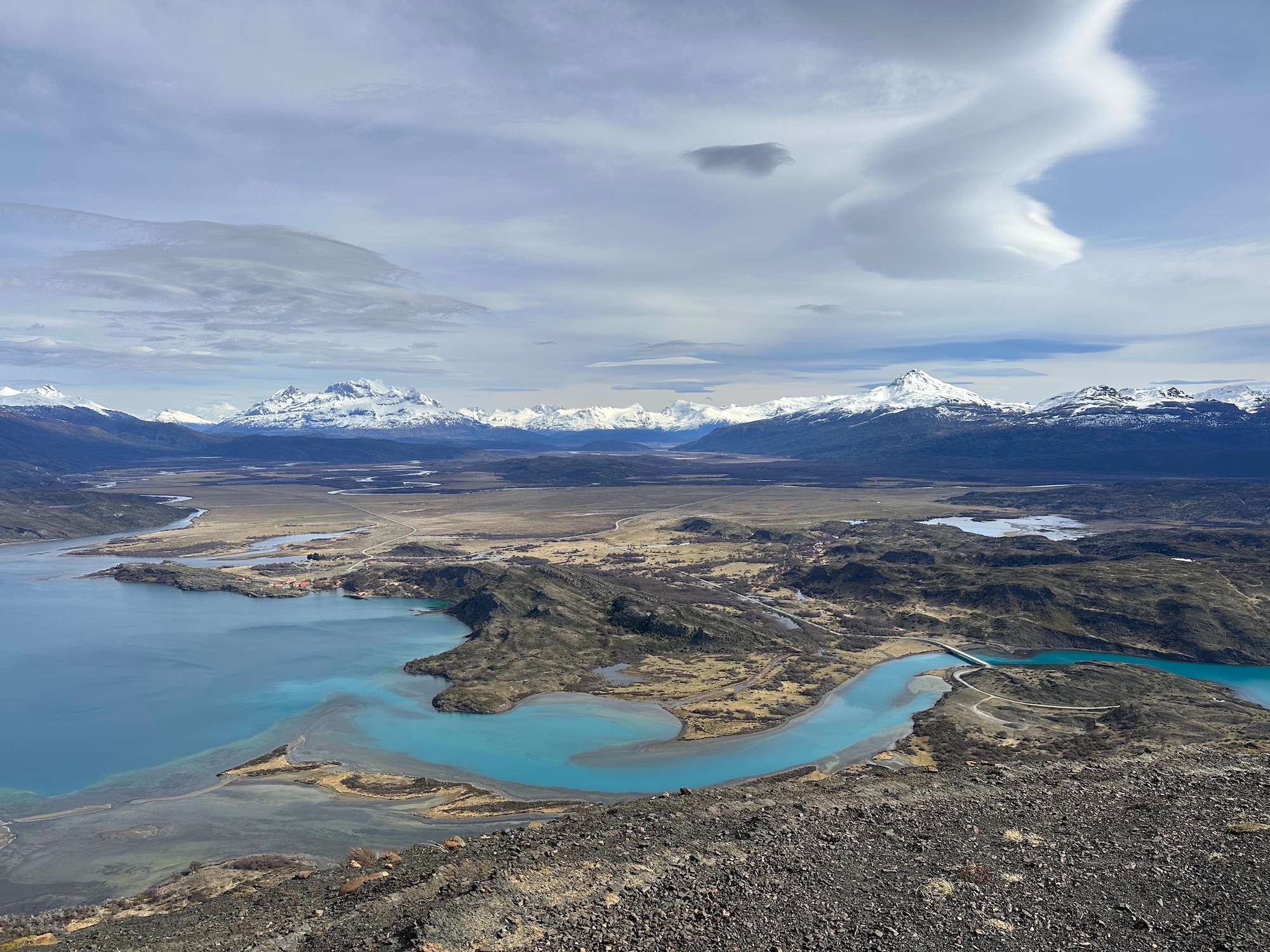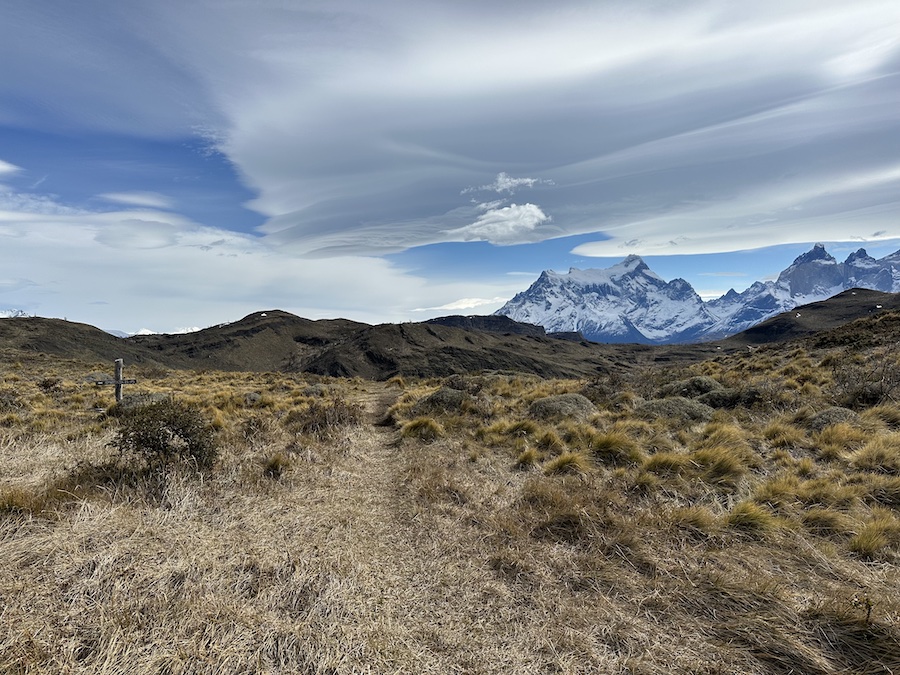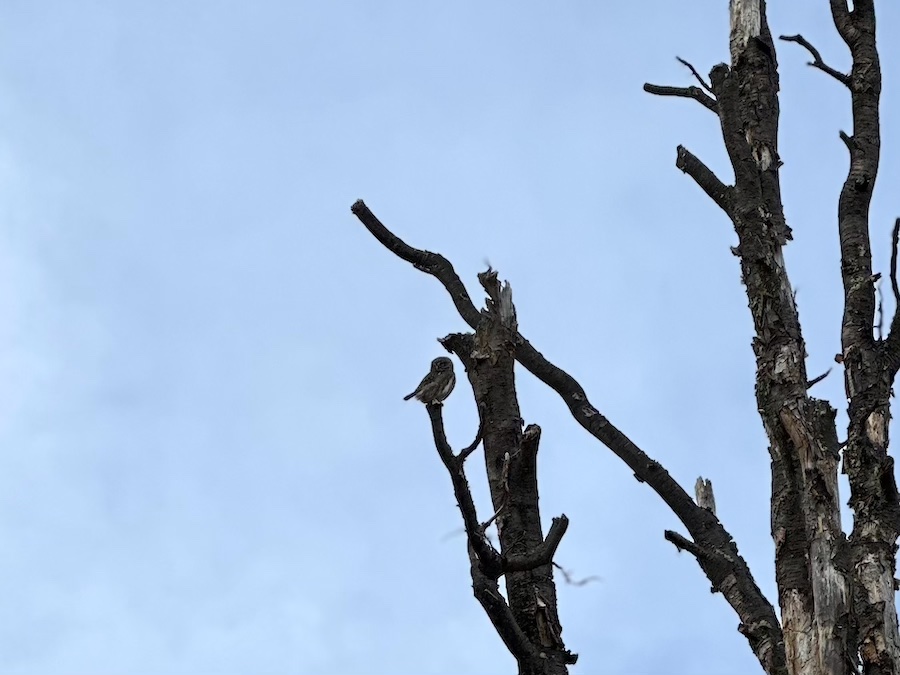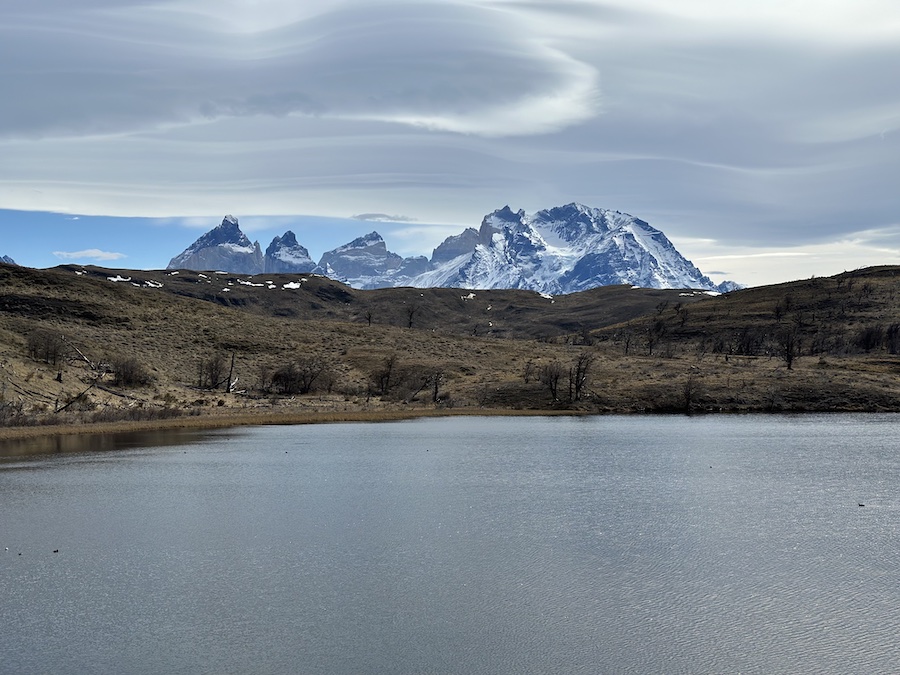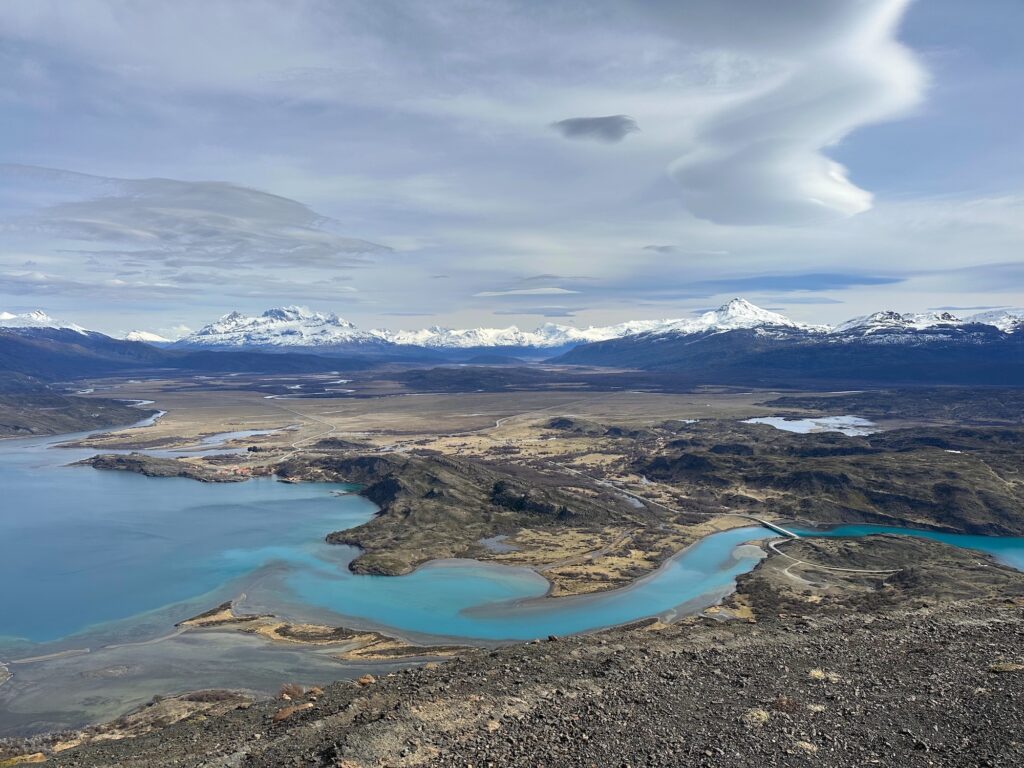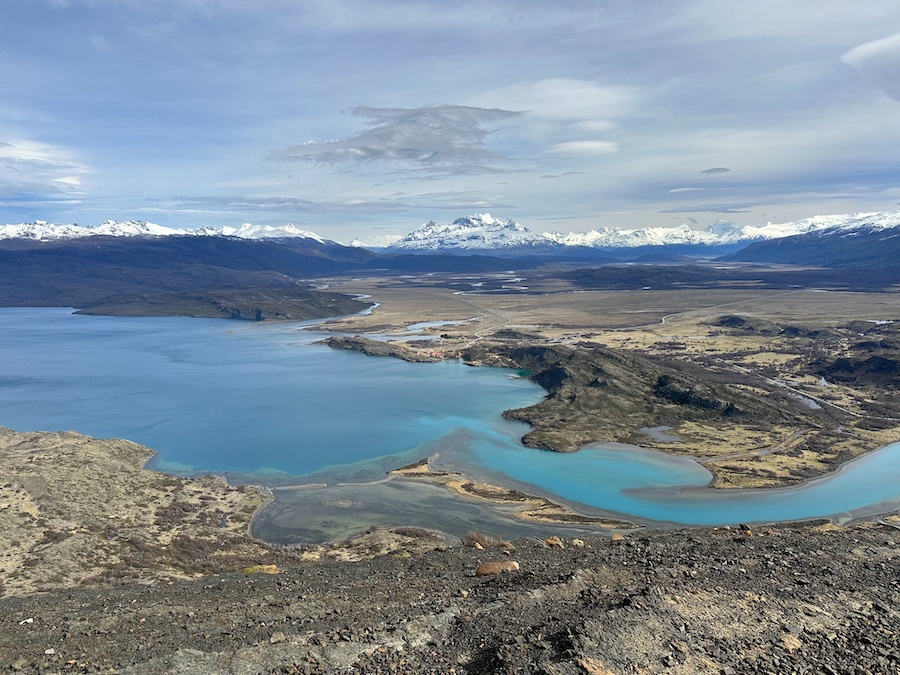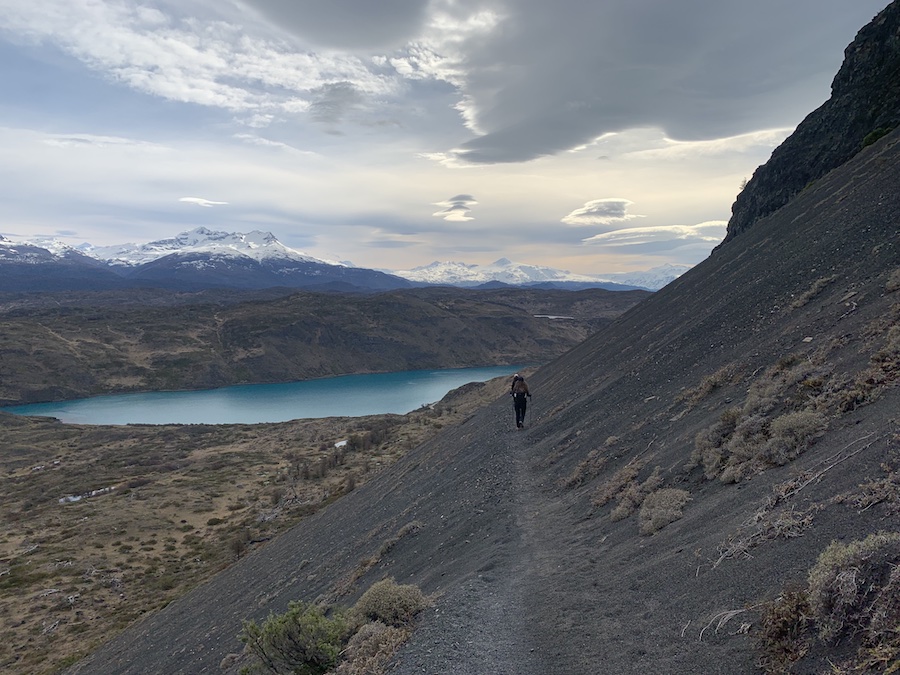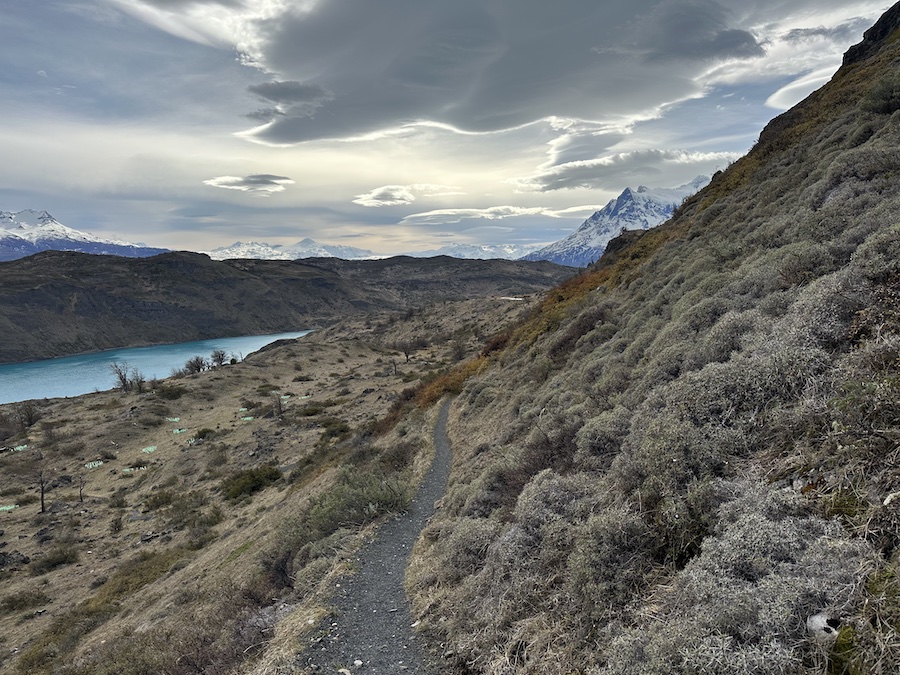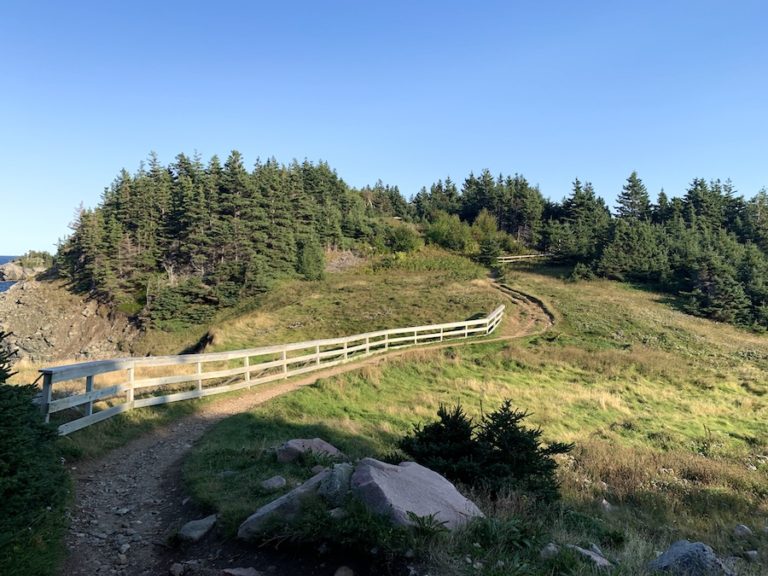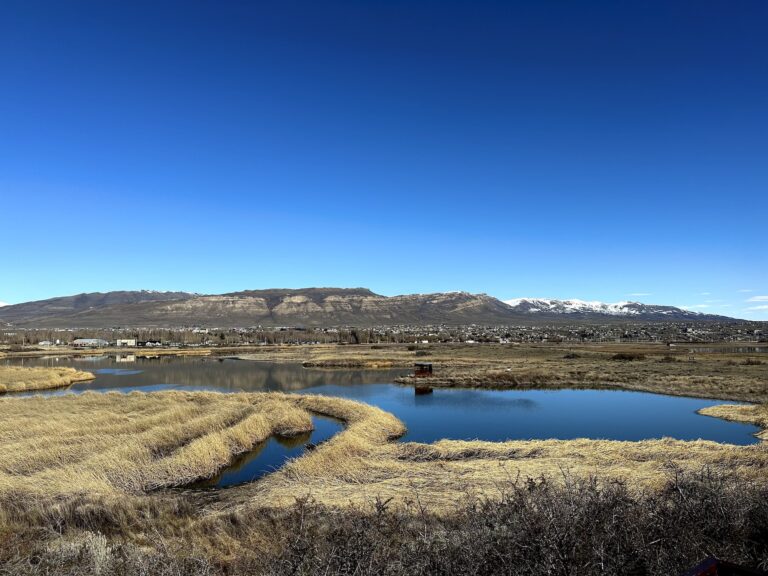Lazo Weber Hike: The Hidden Gem Of Patagonia
The Lazo Weber hike is one of Patagonia’s hidden gem trails that reward hikers with a stunning 360-degree view of Torres del Paine National Park. As you hike along the trail, you’ll encounter breathtaking views of several lagoons, hike through Lenga and Coigue forests, and enjoy multiple perspectives of the Torres del Paine Massif.
With a remarkable blend of solitude and immaculate vistas, this remote trail promises an unforgettable journey for those seeking a deeper connection with nature in one of the world’s most captivating wilderness regions.
Difficulty: Moderate
Length: 13 km (one way)
Suggested Duration: 5 hours
Signage: Great signage and maps throughout
Facilities: Parking at either end of the trail
Disclaimer: This article includes affiliate links. If you click one of them, I may receive a small percentage of the sale at no extra cost to you. Thank you for your support!
Key Features Of Lazo Weber
- Lookout with a 360 view of Torres del Paine
- View of Laguna Verde, Laguna Honda, Laguna De Los Ciervos, Rio Paine (Paine River), Lake Toro, glaciers, southern Patagonia ice fields and Torres del Paine Massif
- A remote and less crowded hike
- A fantastic option for nature enthusiasts seeking solitude and rugged beauty
- Abundance of wildlife and birdwatching opportunities
- Offers stunning views of mountains and pristine landscapes
Facilities And Services
- You need a trekking guide (Ecocamp or Experience Chile) in order to hike the Lazo Weber Trail, as the trailhead is located beside Estancia Lazo and is on privately owned land. Ecocamp and Experience Chile
- Car drop off at one side of the trail (Estancia Lazo) and pick up at the other end (Weber Bridge)
Before You Start Hiking Lazo Weber
Before embarking on the Lazo Weber trail, it’s important to note that you’ll need to be accompanied by a trekking guide from either EcoCamp or Experience Chile, as the trailhead is located on private land outside of the National Park. However, the endpoint of the trail is located within the park. This means you could park on that side and climb a steep incline to the lookout. From there, you have two options. You could either complete the trail as a round trip, starting and returning from Weber Bridge, or you could climb to the lookout and then return back down.
Going with a trekking guide is also beneficial for learning about the native lands, fauna, and flora. Plus, they’ll have a driver drop you all off at the official trailhead located beside Estancia Lazo and then pick you up at the end of the trail at Weber Bridge.
The trail is not too challenging and can be classified as Patagonia flat, which means it consists of a series of small inclines, declines, and flat terrain. It is a great trail where you can enjoy the beautiful views and nature around you without feeling overly exhausted. The most challenging part of the trail is the steep decline when you descend from the lookout to Weber Bridge. We encountered some slippery parts on the decline due to small crushed rock terrain. That being said, we highly recommend trekking poles for this part of the trail.
In addition to hiking poles, waterproof or gore-tex boots are recommended. There were a few areas where we crossed small streams or encountered swampy sections that were unavoidable. I use the Vasque St Elias, while Arthur uses La Sportiva Trango GTX boots.
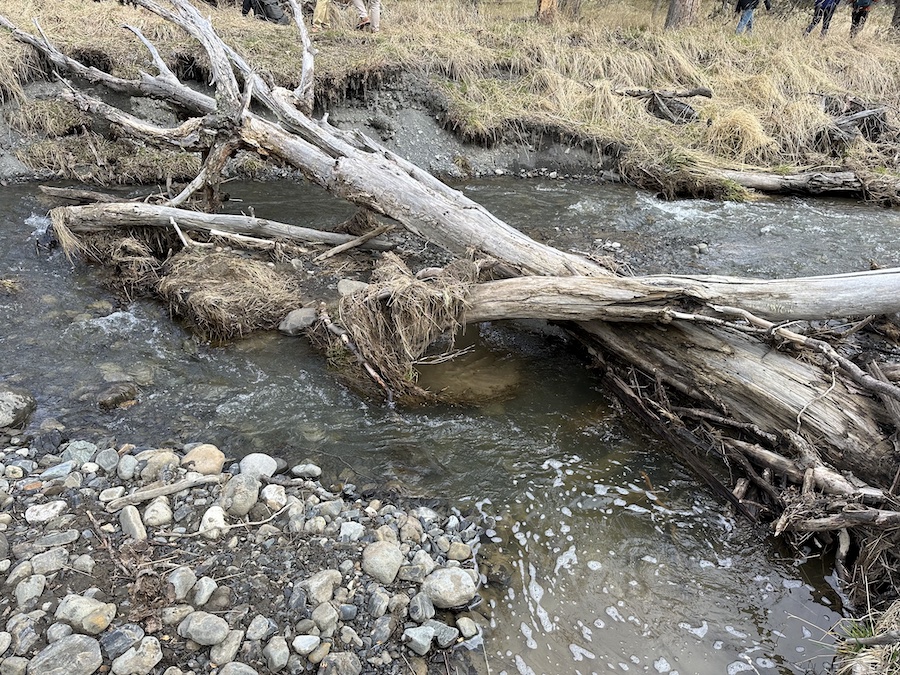
There are a few rules to follow when hiking Lazo Weber.
- No drones
- No camping on the trail (you can stay overnight in camping zones or lodges with a prior reservation)
- Do not litter (take out everything you take in)
- No fishing
- Do not use a camping stove
- Stay on the trail
- No Smoking
- Respect the wildlife and do not feed them
- No swimming
In addition, there are a few other things to note.
- There are mosquitos present; be sure to pack insect repellent.
- The weather is always changing and does have a snow risk
- The winds can be quite heavy and strong, so please be careful, especially at the lookout
This area is known to be a natural habitat for pumas. Although it is rare, there is a possibility of encountering pumas on the trails. Therefore, it is of utmost importance to stay on the designated trail and avoid hiking alone.
If you do come across a puma, it is essential not to panic. Instead, slowly back away while maintaining eye contact with the animal. Do not crouch down or bend over. Instead, try to make yourself appear larger by raising your arms and waving them slowly while making loud noises. If the puma attacks you, defend yourself by hitting its face. If you are hiking with a child, pick them up and hold them in your arms. Lastly, never approach a puma, especially if it’s with cubs or feeding.
Along with pumas, there are various flora and fauna that can be spotted along this trail. Since the trail is not overly frequented, it is the perfect spot for birdwatching and rare species sightings (such as the Geoffery Cat).
Our Experience Hiking Lazo Weber
During our stay at EcoCamp in Torres del Paine, we were fortunate enough to hike Lazo Weber. The day before, we had completed the challenging hike to Mirador Las Torres (Base Torres), so we decided to opt for a moderate-level hike the next day to take it easy on our knees and joints. Although the hike was a good distance, it didn’t involve too many inclines, except for one small incline and a very steep decline at the end. The rest of the hike was Patagonia flat.
To reach Lazo Weber, we had to drive outside Torres del Paine National Park. It took us about 1.5 hours, during which we stopped a few times to admire the scenery, wildlife and farm animals.
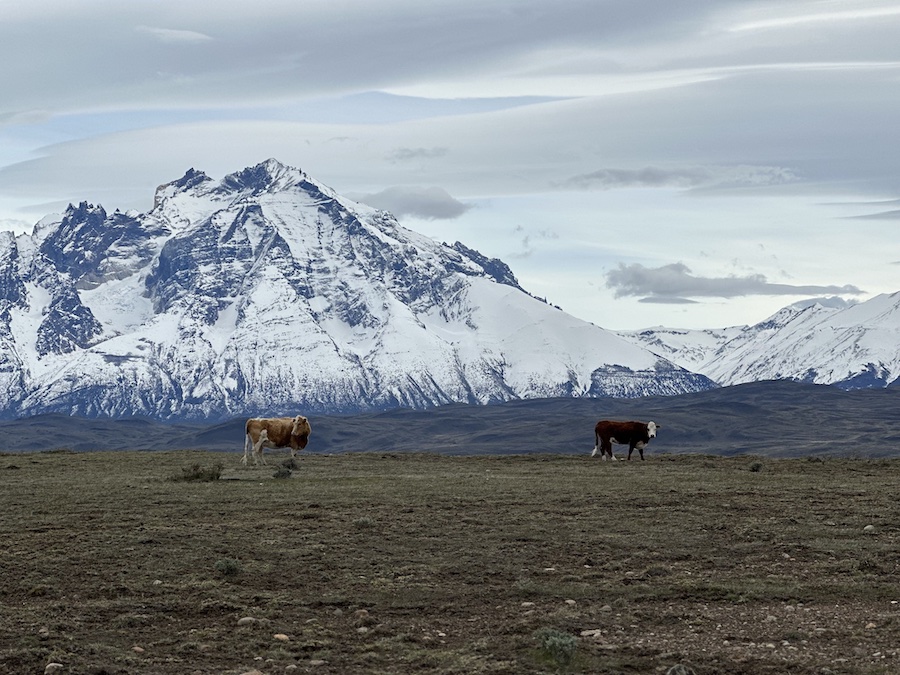
Since we went during the low season, no one else joined us on our trek besides our incredible trekking guide, Paola! The three of us had such a fun experience going at our own pace and trying to see as much wildlife as we could! During our hike, we spotted several bird species, including some rare ones:
- Cachańa (Austral Parakeet): A type of parrot found in Chile and Argentina.
- Carpintero Negro (Magellanic Woodpecker): We spotted a male and female on a tree together, which is a rare occurrence!
- Chuncho (Austral Plygmy Owl): This is Chile’s smallest owl. It is between 17-22 cm (6 – 8 inches).
- Cóndor (Andean Condor): The largest flying bird in the world. We first spotted one just before we reached the trail, then saw another gliding in the air when we made our descent. They tend to stay in windier areas as the wind makes it easier to glide.
- Tiuque (Chimango Caracara): A bird of prey from the Falcon species that can be found around South America.
The first 4.4 km of the trail was quite open, which gave us spectacular views of Laguna Verde with the mountains in the background. We crossed a small stream early on the trail, but otherwise, it remained relatively flat and easy to follow. Here are a few photos from the first portion of the trail.
Here are a few photos from the first section of the Lazo Weber hike.
As we continued on, we passed by Laguna Honda. Which had the most beautiful mirror effect in the water of the mountains.
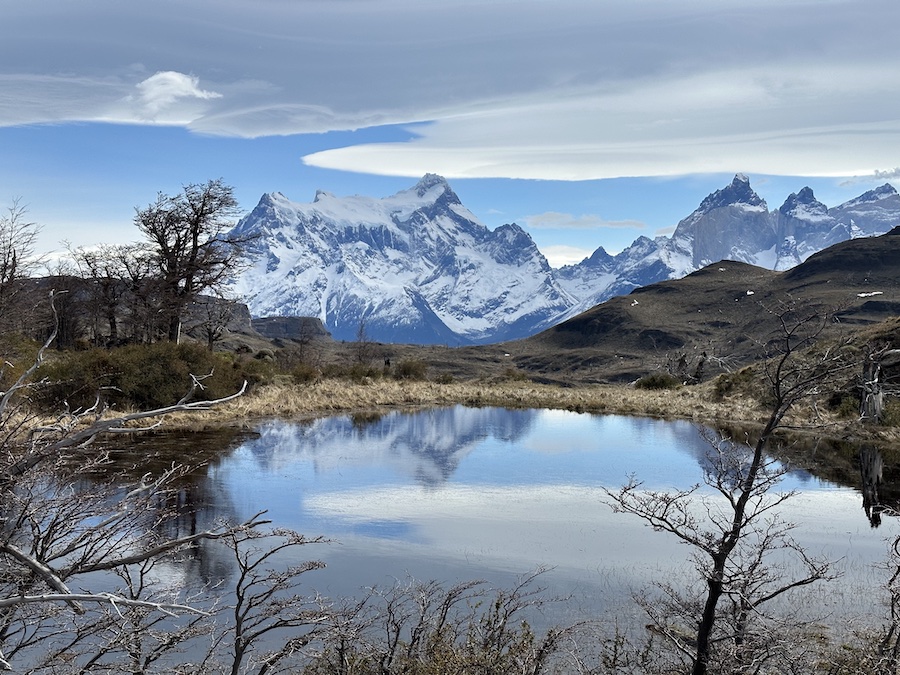
We started our hike through the forest shortly after this. Since we went in October, the trees haven’t had many leaves yet, as can be seen in the photos. It’s fun to imagine how stunning this part of the trail would look in the fall season when the leaves change colours.

During our trek in the forest, Paola informed us that another trekking guide had discovered evidence of a rare Geoffroy Cat along the trail. Naturally, we were eager to catch a glimpse of it ourselves! Spotting a Geoffroy Cat is quite uncommon in Patagonia, so we examined the photos the other guide had shared with Paola in an attempt to locate the exact site of the discovery.
After much searching, we finally found a fallen tree with Geoffroy’s Cat feces. It was an exciting experience trying to match up the photo with the surrounding scenery, and we weren’t even sure if we would be able to find it. But we did! Though we didn’t actually see a Geoffroy Cat, finding where it defecates indicated that it was residing somewhere in the vicinity.
After this, we made our way to a river for a quick lunch break in the shade before continuing on the trail to the lookout. If you stay at EcoCamp, they give you reusable boxes for your hikes, which you pack your own lunch in the morning before you head out on your hike. And Paola, being the sweetheart she is, brought us tea for our lunch break, too.
We quickly got on our way after lunch. As we approached the start of the ascent to the lookout, Paola instructed us to keep our heads down and focus on our feet while climbing up. It was important for us not to peek because we might catch a glimpse of the 360 views on the way up, and she wanted it to be a surprise reveal when we got to the top.
Once we were at the top, she told us to close our eyes and walk forward a bit. Here, she spoke to us the most beautiful words about enjoying the moment together, nature, the journey of the hike and being able to share this with the people we love. This definitely brought tears to my eyes. It’s not every day you get to go hiking in Patagonia with your husband and new friend!
When we opened our eyes, we were practically speechless. The view is something that photos just do not do justice. You really need to see it in person to truly understand the beauty that is Patagonia and Torres del Paine. But, because we are a hiking blog and you know, we took lots of photos. Here are a few photos of the lookout!
Luckily for us, we somehow managed to hike on one of the least windy days in Patagonia, so we were able to spend around 30 to 40 minutes at the lookout, enjoying the views and being present. Then, we began our descent.
To give you an idea of how steep the decline is, the lookout is a little over 400 meters high, while the bottom of the hill is close to 50 meters. As you can imagine, it quickly got quite steep as we began to make our descent. We were happy to have our hiking poles with us for this part, and there were times it felt like we were hiking straight down with little to grip our feet onto, so we were sliding a bit as we hiked. Thankfully, it wasn’t steep all the way down, and there were a few flat sections to give the knees a break.
Once we finally made it down the mountain, we met back up with our driver. Paola told us she had a surprise for us and to go take in the views one last time while she got it prepared. It was the final day of our honeymoon hiking trip, and Paola wanted to make it extra special. She brought us Patagonia beers and a tray of baked goodies to celebrate the end of our hike, our last night at EcoCamp, and our honeymoon. We will never forget this experience, Paola and everyone else at EcoCamp, that made our trip a once-in-a-lifetime experience.

Checklist And Recommended Gear
The following is our recommended gear for the Lazo Weber hike.
- Hiking poles
- Water-resistant shoes/boots (Julia’s / Arthur’s)
- Water bottle
- Lunch/snack
- Sunglasses
- Sunscreen
- Water-resistant jacket
- Lots of layers (Patagonia weather is always changing, and the winds can be quite strong. We suggest a base layer, fleece and water and wind-resistant jacket)
- Hat (a warm hat and a sunhat)
- Binoculars (birdwatching and spotting other fauna)
- Neck gaiter
- Gloves
Related Hikes
Other hikes in Torres del Paine National Park
- Mirador Las Torres (Base Torres)
- Los Cuernos Trek
- Paine Grande To Grey Glacier
- French Valley
- W Trek
- O Trek

